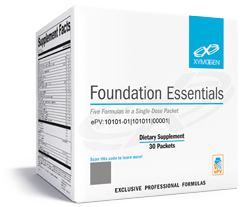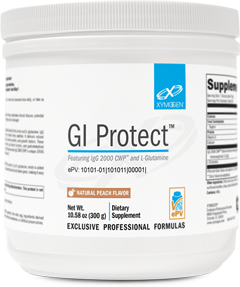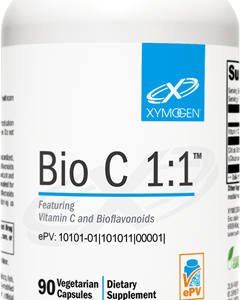Scientific Information/Data
Cordyceps sinensis (cordyceps) As a highly regarded cornerstone of Chinese medicine, cordyceps has been used for centuries for its far-reaching restorative effects. It is a safe, highly valued herb with activities that support nearly every physiological system impacted by the body’s response to normal everyday stressors, including the immune and cardiovascular systems.[1-4] Cordyceps has been used to support good balance, strength, and a healthy body weight. It is also widely and traditionally used to increase energy and enhance stamina.[1,2] It has a positive effect on blood sugar and fat metabolism, which is important because fats and sugars are actively mobilized during activation of the stress response to supply the body with extra energy.[1,4] Traditional Chinese Medicine (TCM) practitioners also recommend the regular use of cordyceps to strengthen the body.[1] Furthermore, the cell-protective and antioxidant activities of cordyceps have been documented.*[1,4-7]
Rhodiola rosea (rhodiola) This adaptogenic herb has been used traditionally in Eastern Europe and Asia for centuries to increase stamina, maintain a healthy mood, support the nervous and immune systems, and maintain healthy male sexual function.[8,9] According to Panossian et al, experimental studies performed on isolated organs, tissues, cells, and enzymes demonstrate that rhodiola preparations exhibit adaptogenic effects that support nerve, brain, and heart health and are calming, longevity-enhancing, and central nervous systemstimulating.[9] In addition, experimental animal models suggest that the root extract may be able to support normal heart rhythm.[10] Rhodiola may also have a positive effect on brain neurotransmitters, such asdopamine and serotonin, and may influence endogenous opioid levels. [8] According to a review of the literature on rhodiola, supplementation supports healthy work performance, quality of sleep, appetite, and energy levels subsequent to intense physical or intellectual strain. Salidrosides and rosavin have been identified as primary actives. The rhodiola extract in this formula is standardized to provide no less than 1%-3% salidrosides and 3% rosavin.*
Panax ginseng (ginseng) As an important herbal remedy in TCM, ginseng has been used for thousands of years, primarily for energy production. The main active agents have been identified as ginsenosides, and they are the focus of much published research.[11] Experimental models show that ginseng and ginsenosides have beneficial effects in supporting the adrenal glands; protecting thegastric mucosa; and supporting healthy body weight, blood hormones, and the gene expression of catecholamine-synthesizing enzymes.[11-15] Ginsenosides also have immune-supporting and cytokine-modulating activities.*[12,16]
Vitamin B6, Pantothenic Acid, and Para-Aminobenzoic Acid (PABA) Pantothenic acid is essential to the adrenal glands for production of the glucocorticoids. It forms pantethine in the body, which then converts to coenzyme-A—the most active metabolic enzyme in the human body needed to produce cellular energy.[17] D-calcium pantothenate contains 91.96% pantothenic acid and is the usual supplemental form. Vitamin B6, acting as a coenzyme, has a role in the conversion of muscle glycogen to glucose, which is needed for a proper response to stressors; the synthesis of serotonin; and the support of the immune function.[18] PABA has a role in amino acid metabolism and is needed to manufacture folic acid.*The
Thyroid Connection The interplay between healthy adrenal function and healthy thyroid function has long been recognized by functional medicine practitioners. In fact, cortisol acts in concert withthyroid hormone at the receptor-gene level, and a normal physiologic amount of cortisol is important for normal thyroid function.*[19
*These statements have not been evaluated by the Food and Drug Administration.
This product is not intended to diagnose, treat, cure, or prevent any disease.
References
1. Holliday J, Cleaver M. Medicinal value of the caterpillar fungi species of the genus Cordyceps (Fr.) Link (Ascomycetes). A review. International Journal of Medicinal Mushrooms. 2008;10(3):219-34. http://www.alohamedicinals.com/ Cordyceps_Ascomycetes.pdf. Accessed May 3, 2011.
2. Zhu JS, Halpern GM, Jones K. The scientific rediscovery of a precious ancient Chinese herbal regimen: Cordyceps sinensis: part II. J Altern Complement Med. 1998;4(3):289-303. [PMID: 9884180]
3. Mei QB, Tao JY, Gao SB, et al. [Antiarrhythmic effects of cordyceps sinensis (Berk.) Sacc] [in Chinese]. Zhongguo Zhong Yao Za Zhi. 1989 Oct;14(10):616- 18, 640. [PMID: 2597326]
4. Li SP, Zhang GH, Zeng Q, et al. Hypoglycemic activity of polysaccharide, with antioxidation, isolated from cultured Cordyceps mycelia. Phytomedicine. 2006 Jun;13(6):428-33. [PMID: 16716913]
5. Marchbank T, Ojobo E, Playford CJ, et al. Reparative properties of the traditional Chinese medicine Cordyceps sinensis (Chinese caterpillar mushroom) using HT29 cell culture and rat gastric damage models of injury. Br J Nutr. 2011 May;105(9):1303-10. [PMID: 21272405]
6. Ji NF, Yao LS, Li Y, et al. Polysaccharide of Cordyceps sinensis enhances cisplatin cytotoxicity in non-small cell lung cancer H157 cell line. Integr Cancer Ther. 2011 Mar 7. [Epub ahead of print] [PMID: 21382957]
7. Shen W, Song D, Wu J, et al. Protective effect of a polysaccharide isolated from a cultivated Cordyceps mycelia on hydrogen peroxide-induced oxidative damage in PC12 cells. Phytother Res. 2011 May;25(5):675-80. doi: 10.1002/ ptr.3320. [PMID: 21043033]
8. Chan SW. Panax ginseng Rhodiola rosea and Schisandra chinensis. Int J Food Sci Nutr. 2012 Mar;63 Suppl 1:75-81. [PMID: 22039930]
9. Panossian A, Wikman G, Sarris J. Rosenroot (Rhodiola rosea): traditional use, chemical composition, pharmacology and clinical efficacy. Phytomedicine. 2010 Jun;17(7):481-93. [PMID: 20378318]
10. Maslov LN, Lishmanov IuB. [Cardioprotective and antiarrhythmic properties of Rhodiolae roseae preparations] [in Russian]. Eksp Klin Farmakol. 2007 SepOct;70(5):59-67.
[PMID: 18074810]
11. Kiefer D, Pantuso T. Panax ginseng. Am Fam Physician. 2003 Oct 15;68(8):1539-42. [PMID: 14596440]
12. Jia L, Zhao Y, Liang XJ. Current evaluation of the millennium phytomedicineginseng (II): Collected chemical entities, modern pharmacology, and clinical
applications emanated from traditional Chinese medicine. Curr Med Chem. 2009;16(22):2924-42. [PMID: 19689273]
13. Kim Y, Choi EH, Doo M, et al. Anti-stress effects of ginseng via down-regulation of tyrosine hydroxylase (TH) and dopamine β-hydroxylase (DBH) gene expression in immobilization-stressed rats and PC12 cells. Nutr Res Pract. 2010 Aug;4(4):270-75. [PMID: 20827341]
14. Tachikawa E, Kudo K, Hasegawa H, et al. In vitro inhibition of adrenal catecholamine secretion by steroidal metabolites of ginseng saponins. Biochem Pharmacol. 2003 Dec 1;66(11):2213-21. [PMID: 14609746]
15. Rai D, Bhatia G, Sen T, et al. Anti-stress effects of Gingko biloba and Panaxginseng: a compartive study. J Pharmacol Sci. 2003 Dec;93(4): 458-64.[PMID: 14737017]
16. Lee DC, Lau AS. Effects of Panax ginseng on tumor necrosis factor-α-mediated inflammation: a mini-review. Molecules. 2011 Mar 30;16(4):2802-16. [PMID:21455094]
17. National Institutes of Health. Office of Dietary Supplements. Dietary Supplement Fact Sheet: Vitamin B6. http://ods.od.nih.gov/factsheets/VitaminB6- HealthProfessional/. Updated September 15, 2011. Accessed March 29, 2012.
18. University of Maryland Medical Center. Vitamin B5 (Pantothenic acid). www. umm.edu/altmed/articles/vitamin-b5-000336.htm. Accessed May 10, 2011.
19. Perrone MH, Greer TL, Hinkle PM. Relationships between thyroid hormone and glucocorticoid effects in GH3 pituitary cells. Endocrinology. 1980 Feb;106(2):600-05. [PMID: 6243541]







Reviews
There are no reviews yet.